Home>Storage Ideas>Kitchen Storage>How Can I Save Money On Kitchen Cabinets? Kitchen Experts Advise
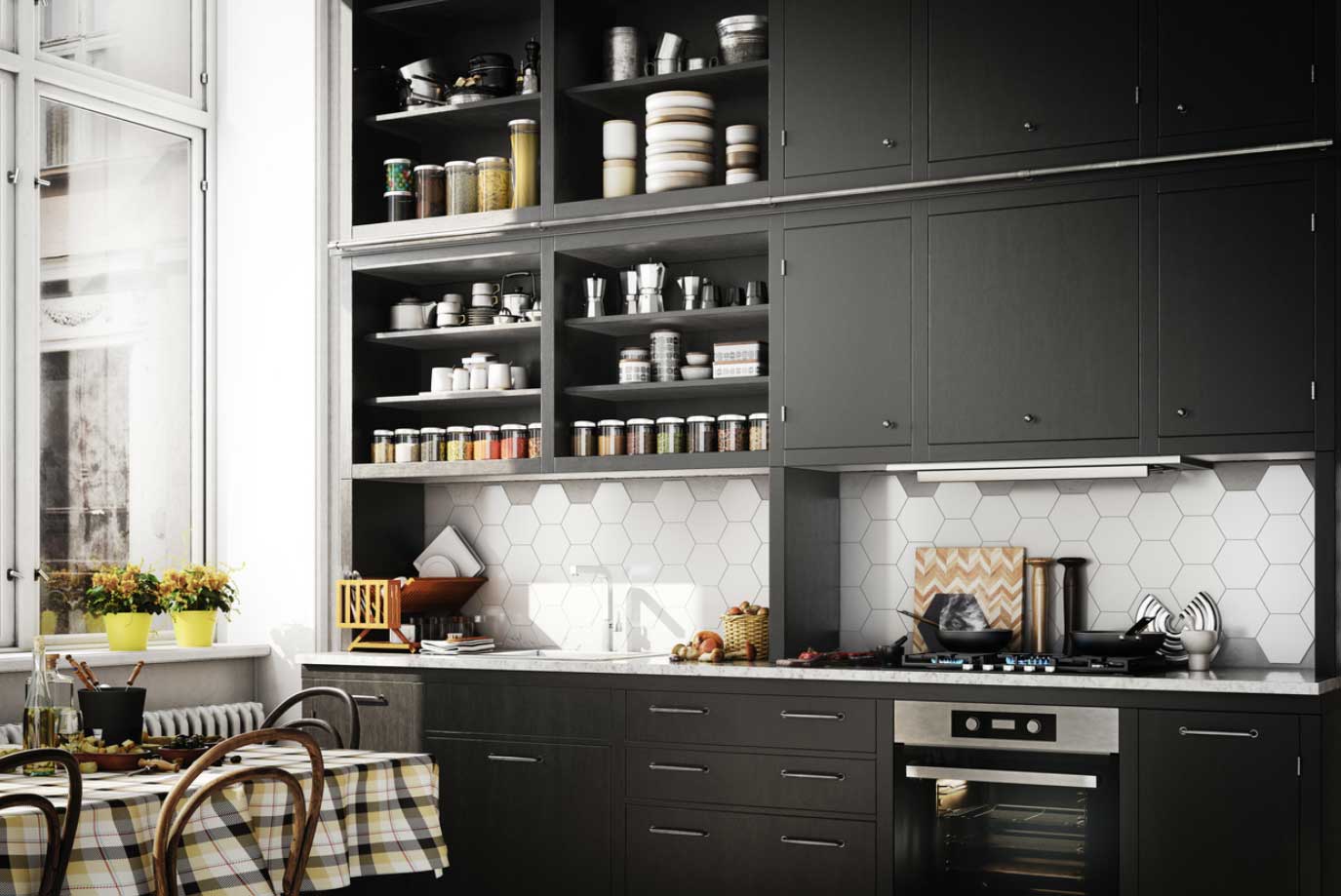

Kitchen Storage
How Can I Save Money On Kitchen Cabinets? Kitchen Experts Advise
Modified: January 6, 2024
Discover valuable kitchen storage ideas and expert advice on how to save money when buying kitchen cabinets. Simplify your kitchen organization with smart solutions and maximize your space.
(Many of the links in this article redirect to a specific reviewed product. Your purchase of these products through affiliate links helps to generate commission for Storables.com, at no extra cost. Learn more)
Introduction
In any kitchen renovation project, one of the biggest expenses can be the cost of new cabinets. However, there are several ways to save money without compromising on quality or style. By following the advice of kitchen experts, you can transform your kitchen with cost-effective solutions that will maximize your budget and create a beautiful and functional space.
Refacing vs. Replacing:
One of the first decisions to make when it comes to kitchen cabinets is whether to reface or replace them. Refacing involves replacing the doors and drawer fronts while keeping the existing cabinet boxes intact. This option is cheaper than a full cabinet replacement as it eliminates the need for new boxes and installation.
Alternatively, if you prefer a completely new look or if your current cabinets are in poor condition, replacing them may be the better choice. However, this can be a more costly endeavor. It’s important to weigh the pros and cons of both options and consult with a kitchen professional to determine the best fit for your specific situation.
Shop for Discounts and Sales:
Another way to save money on kitchen cabinets is by shopping for discounts and taking advantage of sales. Many home improvement stores offer regular sales events where you can find significant discounts on cabinets. Additionally, keep an eye out for clearance sales, seasonal promotions, and online deals. By being patient and doing some research, you can find high-quality cabinets at a fraction of the original cost.
Utilize Salvaged or Second-Hand Cabinets:
Consider salvaged or second-hand cabinets as a budget-friendly option. You can find these at salvage yards, architectural salvage stores, or online marketplaces. While they may require a bit more effort and creativity to incorporate into your kitchen design, they can provide a unique and charming touch to your space. Just be sure to thoroughly inspect the cabinets for any damage or structural issues before purchasing.
Consider Stock Cabinets instead of Custom-made:
Custom-made cabinets can be expensive due to the labor and materials involved. If your budget is tight, consider opting for stock cabinets instead. Stock cabinets are pre-made and come in standard sizes and finishes, making them more affordable. While they may not be as customizable as custom cabinets, you can still find a wide range of options to suit your style and storage needs.
Opt for Ready-to-Assemble (RTA) Cabinets:
Ready-to-Assemble (RTA) cabinets offer a cost-effective solution as they are shipped flat-packed and require assembly. This not only reduces the cost but also allows for easier transportation and installation. RTA cabinets are available in various styles and finishes and can be a great choice for budget-conscious homeowners looking to save money on their kitchen renovation.
Explore Different Material Options:
When it comes to kitchen cabinets, the material used can greatly impact the cost. While solid wood cabinets are considered high-end and durable, they can also be quite expensive. Consider alternative materials like plywood or medium-density fiberboard (MDF) for a more affordable yet still durable option. These materials can be covered with veneer or laminate to achieve the desired look.
DIY Cabinet Installation:
If you’re handy and have the necessary tools and skills, consider installing the cabinets yourself to save on labor costs. However, be sure to accurately measure your space and follow proper installation guidelines to ensure a successful outcome. If you’re unsure about the installation process, it’s best to consult with a professional to avoid any costly mistakes.
Maximize Cabinet Space with Organizers and Inserts:
To make the most of your cabinet space, invest in organizers and inserts. These can help maximize storage capacity and keep your kitchen organized. From pull-out shelves and spice racks to drawer dividers and tray organizers, there are numerous options available to fit your specific storage needs. By efficiently utilizing your cabinet space, you can avoid the need for additional cabinets and save money in the process.
Repaint or Refinish Existing Cabinets:
If your existing cabinets are structurally sound but in need of a refresh, consider repainting or refinishing them. A fresh coat of paint or stain can completely transform the look of your cabinets at a fraction of the cost of purchasing new ones. Be sure to properly prepare the surface, choose a high-quality paint or stain, and follow the necessary steps for a professional-looking finish.
Seek Professional Advice and Consultations:
When undertaking a kitchen renovation, it’s crucial to seek professional advice and consultations. Kitchen design experts can recommend cost-effective options and provide valuable insights based on their experience. They can also help you create a realistic budget and guide you in making informed decisions that align with your vision and financial constraints.
By incorporating these money-saving strategies, you can achieve your dream kitchen without breaking the bank. Whether it’s through refacing cabinets, shopping for discounts, or utilizing organizers, there are plenty of options to fit your budget. Remember to prioritize quality and functionality while being creative and resourceful, and consult with professionals when needed. With careful planning and savvy decision-making, you can save money on kitchen cabinets and create a beautiful and functional space that you can enjoy for years to come.
Key Takeaways:
- Refacing cabinets can save money and provide a fresh look without the cost of full replacement. Consider discounts, second-hand options, and DIY installation for budget-friendly kitchen renovations.
- Utilize organizers and inserts to maximize cabinet space and keep your kitchen organized. Seek professional advice for cost-effective solutions and a beautifully designed kitchen.
Refacing vs. Replacing
When it comes to kitchen cabinets, one of the biggest decisions you’ll need to make is whether to reface or replace them. Each option has its own benefits and considerations, and understanding the differences can help you make an informed decision that aligns with your budget and renovation goals.
Refacing cabinets involves replacing the doors and drawer fronts while keeping the existing cabinet boxes intact. This option is more cost-effective than a full cabinet replacement since it eliminates the need for new boxes and installation. Refacing can give your kitchen a fresh look without the expense and hassle of a complete renovation.
One of the primary advantages of cabinet refacing is the cost savings. It typically costs significantly less than replacing the cabinets entirely, making it an attractive option for those on a tight budget. Refacing also allows you to maintain the structural integrity and layout of your existing cabinets, which means you don’t have to deal with the potential challenges of reconfiguring your kitchen space.
Another benefit of refacing is the relatively quick and straightforward process. Since the cabinet boxes remain in place, there is minimal disruption to your daily routine during the refacing process. This makes it a convenient option for busy homeowners who want to complete their kitchen renovation quickly.
However, it’s important to consider the limitations of refacing. While it can dramatically improve the appearance of your cabinets, it may not be suitable for cabinets that are severely damaged or in poor condition. In such cases, replacement may be necessary to ensure the longevity and functionality of your kitchen cabinets.
Replacing cabinets involves removing the existing cabinets entirely and installing new ones. This option gives you more freedom and flexibility in terms of design, layout, and materials. By replacing your cabinets, you can create a completely new look and feel for your kitchen, tailored to your specific preferences.
One of the advantages of cabinet replacement is the ability to customize your cabinets to suit your exact needs and style. From choosing the materials and finishes to selecting the hardware and accessories, you have full control over the design process. This level of customization allows you to create a kitchen that truly reflects your personality and meets your storage requirements.
While cabinet replacement offers greater design possibilities, it can significantly increase the overall cost of your kitchen renovation. The expense includes not only the cost of the cabinets themselves but also the labor for removal and installation. Additionally, replacing cabinets can be a more time-consuming process compared to refacing since it involves more extensive work.
Before making a decision, it’s essential to evaluate your budget, the condition of your existing cabinets, and your design preferences. If your cabinets are in good structural condition but need a cosmetic update, refacing can be a cost-effective and efficient option. On the other hand, if you’re looking for a complete transformation and have the budget to support it, cabinet replacement can provide the flexibility and customization you desire.
Consulting with a kitchen professional can help you assess the feasibility of each option based on your specific circumstances. They can provide expert advice, outline the costs and benefits, and guide you in making an informed decision. Whether you choose refacing or replacing, the end result should be a kitchen that you love and that adds value to your home.
Shop for Discounts and Sales
When it comes to saving money on kitchen cabinets, one of the smartest strategies is to shop for discounts and take advantage of sales. By being diligent and patient, you can find great deals on high-quality cabinets that fit within your budget. Here are some tips to help you maximize your savings:
1. Research and Comparison Shopping: Before making a purchase, spend time researching different retailers and brands. Look for customer reviews, product specifications, and pricing information. Comparison shopping allows you to find the best deals available and ensures that you’re getting the most value for your money.
2. Local Hardware and Home Improvement Stores: Visit local hardware and home improvement stores in your area to check for ongoing sales and discounts on kitchen cabinets. These stores often have special promotions, clearance events, or seasonal sales, where you can find significant savings.
3. Online Retailers: Online shopping offers a wide range of options and the convenience of browsing from the comfort of your home. Check online retailers specializing in kitchen cabinets for discounts and sales. Many online stores also offer free shipping or additional discounts for bulk purchases.
4. Sign Up for Newsletter and Email Notifications: Stay updated with the latest deals and promotions by signing up for newsletters and email notifications from cabinet retailers. This way, you’ll receive alerts about upcoming sales, exclusive discounts, and limited-time offers directly in your inbox.
5. Visit Local Warehouse or Outlet Stores: Warehouse and outlet stores often offer discounted cabinets, including overstocked items or slightly damaged ones. While these cabinets may have minor scratches or imperfections, they can still be a great option for those seeking budget-friendly solutions.
6. Attend Home and Kitchen Expos: Home and kitchen expos are a great opportunity to explore a variety of cabinet options and connect with manufacturers and suppliers directly. These events often feature exclusive discounts and promotions that are not available elsewhere. Keep an eye out for local expos in your area and plan a visit to explore the deals.
7. Consider Floor Models and Display Units: In some showrooms or stores, floor models and display units may be available for purchase at discounted prices. These cabinets have been used for display purposes and may have slight wear and tear, but they can offer significant savings compared to purchasing brand new ones.
8. Bulk Discounts and Contractor Deals: If you’re planning a major kitchen renovation or if you’re working with a contractor, inquire about bulk discounts or contractor deals. Many cabinet suppliers offer special pricing for large orders or for clients who are working with professionals. Take advantage of these discounts to save money on your overall project costs.
9. Timing is Key: Keep in mind that certain times of the year may offer better deals on kitchen cabinets. For example, holiday weekends or end-of-season sales can be an excellent opportunity to find discounts. It may require some patience, but waiting for the right timing can help you secure substantial savings.
10. Negotiate: Don’t be afraid to negotiate the price when purchasing cabinets, especially if you’re buying in bulk or if you’ve found a similar product offered at a lower price elsewhere. Many retailers may be willing to lower the price or offer additional perks to secure your business.
Remember, saving money doesn’t mean compromising on quality. While searching for discounts and sales, always prioritize the quality and durability of the cabinets. It’s essential to find a balance between cost and value to ensure that you’re investing in cabinets that will withstand the test of time.
Utilize Salvaged or Second-Hand Cabinets
If you’re looking for a budget-friendly option when it comes to kitchen cabinets, consider utilizing salvaged or second-hand cabinets. Not only can this approach help you save money, but it can also add a unique and charming touch to your kitchen. Here are some tips to help you make the most of salvaged or second-hand cabinets:
1. Explore Salvage Yards: Salvage yards are treasure troves for finding unique and affordable salvaged cabinets. These yards often have a wide selection of cabinets salvaged from old homes, renovations, or surplus building materials. Take the time to visit different salvage yards in your area, as each one may have a different inventory to choose from.
2. Check Architectural Salvage Stores: Architectural salvage stores specialize in selling reclaimed building materials, including cabinets. These stores carefully salvage items from old houses and buildings, preserving their character and history. Visiting these stores can not only provide you with cost-effective cabinets but also an opportunity to support sustainability by repurposing materials.
3. Online Marketplaces: Online marketplaces such as Craigslist, Facebook Marketplace, and eBay offer a vast selection of second-hand cabinets. These platforms connect sellers and buyers, giving you the chance to find cabinets at a fraction of the original cost. Be sure to thoroughly review the listings, ask for detailed photos, and arrange to inspect the cabinets in person before making a purchase.
4. Attend Kitchen Renovation Auctions: Kitchen renovation auctions can be a great way to find salvaged cabinets and other components at discounted prices. Keep an eye out for local auctions organized by renovation companies or homeowners who are upgrading their kitchens. It’s important to set a budget and be prepared to bid competitively to secure the cabinets you want.
5. Verify Cabinet Quality: When considering salvaged or second-hand cabinets, it’s crucial to assess their condition and quality. Look for signs of damage, such as water stains, warping, or structural issues. Remember that minor cosmetic flaws can often be remedied with some repairs or a fresh coat of paint. However, ensure that the cabinets are sturdy and functional before making a purchase.
6. Take Measurements: Before purchasing salvaged or second-hand cabinets, take accurate measurements of your kitchen space. Ensure that the cabinets you choose will fit properly and align with your kitchen layout. Additionally, consider any modifications that may be required, such as resizing or reconfiguring the cabinets to meet your specific needs.
7. Combine Salvaged with New Cabinets: If you can’t find enough salvaged or second-hand cabinets to complete your entire kitchen, consider mixing them with new cabinets. This can create an eclectic and unique look while allowing you to save money on some of the cabinets. By strategically incorporating salvaged cabinets in key areas like the pantry or island, you can add character without compromising functionality.
8. Refinish and Customize: Once you’ve obtained salvaged or second-hand cabinets, you can refinish and customize them to match your desired style and color scheme. Clean the cabinets thoroughly, repair any damage, and apply a fresh coat of paint or stain. You can also replace the hardware to give them a modern and updated look.
9. Seek Professional Assistance if Needed: If you’re unsure about the structural integrity or installation process of salvaged or second-hand cabinets, it’s best to seek professional assistance. A kitchen renovation expert can help you assess the cabinets, provide advice on repairs or modifications, and ensure proper installation to ensure they function optimally in your kitchen.
Utilizing salvaged or second-hand cabinets is a sustainable and cost-effective way to enhance your kitchen. By exploring salvage yards, architectural salvage stores, online marketplaces, and attending auctions, you can find unique and affordable cabinets with character. Remember to verify the quality, take accurate measurements, and consider combining salvaged cabinets with new ones to create a cohesive and stylish kitchen. With a little creativity and effort, you can transform your kitchen affordably and sustainably.
Consider Stock Cabinets instead of Custom-made
When it comes to kitchen cabinets, considering stock cabinets over custom-made ones can be a cost-effective solution that doesn’t compromise on style or quality. Stock cabinets are pre-made, standardized cabinets that come in a wide range of styles, sizes, and finishes. Here are some reasons why you should consider stock cabinets for your kitchen renovation:
1. Affordability: One of the main advantages of stock cabinets is their affordability. Since they are mass-produced and readily available, stock cabinets are typically priced lower than custom-made cabinets. This can significantly reduce your overall kitchen renovation budget, allowing you to allocate funds to other areas of the project.
2. Quick Availability: Stock cabinets are readily available at home improvement stores and cabinet retailers. Their production and distribution process is streamlined, which means you can typically find the cabinets you need without the long lead times associated with custom cabinets. This is particularly beneficial if you have a tight timeline for your kitchen renovation or if you’re working with a contractor.
3. Variety of Styles and Finishes: Stock cabinets offer a wide range of styles, finishes, and configurations to suit different design preferences and kitchen layouts. Whether you prefer traditional, modern, or transitional styles, you can find stock cabinets that fit your aesthetic vision. Additionally, stock cabinets often come in popular finishes, including natural wood tones, painted finishes, and laminates.
4. Standard Sizing: Stock cabinets are manufactured in standard sizes, which can make the installation process easier and more cost-effective. Standard sizing allows for efficient use of space and ensures compatibility with off-the-shelf cabinet accessories, such as organizers and inserts. However, it’s important to measure your kitchen accurately and plan the layout to ensure a proper fit and maximize storage capacity.
5. Quality Construction: While stock cabinets may be less expensive than custom cabinets, that doesn’t mean they compromise on quality. Many stock cabinets are constructed using sturdy materials, such as solid wood frames, plywood or particleboard panels, and quality hardware. It’s important to choose stock cabinets from reputable manufacturers to ensure durability and longevity.
6. Professional Installation: Stock cabinets are designed for ease of installation, which makes them a good choice for homeowners who prefer professional installation. Many retailers offer installation services or can recommend reputable installers in your area. Hiring professionals to install your stock cabinets ensures proper alignment, secure attachment, and a polished final result.
7. Flexibility in Design: Although stock cabinets are not customizable to the same extent as custom cabinets, they still offer some design flexibility. Most stock cabinet lines provide options for different door styles, hardware choices, and interior accessory upgrades. By selecting the right combination of stock cabinets and accessories, you can still achieve a personalized and functional kitchen design.
8. Value for Money: Stock cabinets provide excellent value for money, especially if you’re looking to achieve a beautiful and functional kitchen within a limited budget. When compared to the higher price tag of custom cabinets, stock cabinets offer a cost-effective solution that can deliver comparable quality and aesthetics.
It’s important to note that while stock cabinets offer many advantages, they may not be suitable for every kitchen renovation. If you have unique design requirements or unconventional kitchen layouts, custom-made cabinets may be the better option. However, for most homeowners seeking an affordable and stylish kitchen upgrade, stock cabinets are a practical choice.
Before making a decision, take the time to research different stock cabinet options, visit showrooms to see the cabinets in person, and consult with kitchen design professionals. They can help you navigate the selection process, offer advice on the best options for your specific needs, and ensure that your chosen stock cabinets blend seamlessly into your overall kitchen design.
Opt for Ready-to-Assemble (RTA) Cabinets
Ready-to-Assemble (RTA) cabinets offer a cost-effective and convenient solution for homeowners looking to save money on kitchen cabinets. As the name suggests, RTA cabinets are shipped unassembled and require assembly on-site. Here are several reasons why you should consider opting for RTA cabinets for your kitchen renovation:
1. Cost Savings: RTA cabinets are generally more affordable than pre-assembled or custom cabinets. By eliminating the cost of factory assembly and reducing transportation expenses, RTA cabinets can significantly lower your overall kitchen renovation budget. This cost savings can be especially beneficial if you’re working with a limited budget or looking to allocate funds to other areas of your project.
2. Easy Accessibility: RTA cabinets are widely available both online and in-store. Many home improvement retailers offer a wide selection of RTA cabinets in various styles, sizes, and finishes. This accessibility makes it easier for homeowners to browse and compare different options, ensuring that they find the right cabinets to suit their design preferences and storage needs.
3. Convenient Shipping and Storage: Due to their unassembled nature, RTA cabinets are shipped flat-packed, which makes transportation and storage more convenient. The compact packaging reduces the risk of damage during transit and allows for easier maneuverability, especially in tight spaces. This convenience can also be advantageous if you’re handling the installation yourself or coordinating with a contractor.
4. DIY-Friendly Installation: Assembly of RTA cabinets is designed to be user-friendly and does not require advanced carpentry skills. With the help of detailed instructions and minimal tools, homeowners can assemble the cabinets themselves, saving money on professional installation fees. This DIY approach not only adds a sense of accomplishment but also allows you to have control over the quality and precision of the installation.
5. Customizable Options: While RTA cabinets come in standard sizes and designs, many manufacturers offer customizable options to suit your specific needs. You can choose from different finishes, door styles, and hardware options to create a kitchen design that aligns with your vision. Additionally, RTA cabinets are compatible with various accessories such as pull-out shelves, dividers, and organizers, allowing you to maximize storage and organize your kitchen efficiently.
6. Quick Turnaround Time: Assembling RTA cabinets is generally faster compared to waiting for custom cabinets to be manufactured and delivered. Since RTA cabinets are readily available, you can start your kitchen renovation as soon as possible. This quick turnaround time can be particularly beneficial if you have time constraints or if you’re eager to complete your project in a timely manner.
7. Quality Construction: Contrary to the misconception that RTA cabinets are of lower quality, many manufacturers produce durable and well-crafted RTA cabinets. High-quality materials such as solid wood, plywood, or MDF are commonly used in their construction. It’s important to choose RTA cabinets from reputable brands and suppliers to ensure that you’re getting cabinets that can withstand the test of time.
8. Accessibility for Renovations: The unassembled nature of RTA cabinets makes them an excellent choice for kitchen renovations in existing homes. They can be easily transported through narrow doorways, small hallways, or up staircases, which can be challenging for fully assembled cabinets. This accessibility ensures that you can update your kitchen without the hassle and potential damage caused by difficult installation processes.
Before choosing RTA cabinets for your kitchen renovation, it’s essential to carefully measure your space and plan the layout accordingly. Ensuring that the cabinets fit properly and align with your kitchen design is crucial for a successful installation. Additionally, consider your skill level and availability for assembly, as well as any potential need for assistance from professionals or experienced DIYers.
Overall, RTA cabinets offer a practical and cost-effective solution for homeowners seeking budget-friendly options without compromising on quality or style. By opting for RTA cabinets, you can achieve a beautiful and functional kitchen while keeping your renovation expenses under control.
Consider ready-to-assemble (RTA) cabinets, which are more affordable than custom or pre-assembled options. Look for sales, discounts, or clearance items, and consider using open shelving or mixing materials for a budget-friendly alternative.
Explore Different Material Options
When it comes to kitchen cabinets, exploring different material options can help you save money without sacrificing quality. While solid wood cabinets are often considered high-end, there are alternative materials that can provide both durability and affordability. Here are some material options to consider for your kitchen cabinets:
1. Plywood: Plywood is a popular choice for cabinet construction due to its strength and stability. Made from layers of wood veneers glued together, plywood offers a sturdy and durable option for kitchen cabinets. It is resistant to warping and shrinking, making it suitable for humid kitchen environments. Plywood cabinets can be covered with veneer, laminate, or paint to achieve the desired aesthetic.
2. Medium-Density Fiberboard (MDF): MDF is an engineered wood product made from wood fibers combined with resin and formed into panels. It is known for its smooth and uniform surface, making it an ideal material for painted finishes. MDF cabinets are more affordable than solid wood cabinets but still offer excellent durability and resistance to moisture, making them suitable for kitchens.
3. Particleboard: Particleboard is another engineered wood product made from wood particles combined with adhesive, which is then pressed and formed into panels. While it is not as strong as plywood or MDF, particleboard is a cost-effective option for kitchen cabinets. It can be covered with veneer, laminate, or paint to enhance its appearance and provide protection against moisture.
4. Thermofoil: Thermofoil cabinets are made by applying a vinyl coating over a substrate material, such as MDF or particleboard. The vinyl coating is heated and vacuum-sealed onto the substrate, creating a smooth and durable surface. Thermofoil cabinets are resistant to moisture and easy to clean, making them a practical choice for kitchens. They are available in a wide range of colors and styles, making it easy to achieve the desired look.
5. Laminate: Laminate cabinets consist of a thin layer of laminate material bonded to a substrate. Laminate is a synthetic material that offers excellent durability, moisture resistance, and easy maintenance. It comes in a variety of colors, patterns, and textures, allowing for endless design possibilities. Laminate cabinets can provide a sleek and modern look at a fraction of the cost of solid wood cabinets.
6. Solid Wood Veneer: Solid wood veneer cabinets provide the appearance of solid wood without the high cost. Veneer is a thin layer of real wood that is applied to a substrate, such as plywood or MDF. This option offers the natural beauty and warmth of wood while being more affordable than cabinets made entirely of solid wood. Depending on your preference, you can choose from a variety of wood species and finishes.
When choosing the material for your kitchen cabinets, it’s important to consider factors such as budget, durability, style, and maintenance requirements. Take into account your specific needs and preferences to determine the best material option that fits your budget constraints. Consulting with a kitchen design professional can also provide valuable insights and help you make an informed decision based on your unique situation.
Remember, while alternative materials can offer cost savings, it’s essential to choose quality products from reputable manufacturers to ensure that your cabinets will withstand the demands of everyday kitchen use. With careful consideration and exploration of different material options, you can find cabinets that strike the perfect balance between affordability and durability for your kitchen renovation project.
DIY Cabinet Installation
Installing kitchen cabinets yourself can be a rewarding and cost-effective way to save money on your kitchen renovation. While it requires time, attention to detail, and some basic handyman skills, DIY cabinet installation can result in professional-looking results. Here are some tips to help you successfully tackle the installation process:
1. Plan and Prepare: Before beginning the installation, thoroughly plan the layout of your cabinets and take accurate measurements. Consider factors such as the height and depth of the cabinets, the distance between them, and any necessary modifications to accommodate appliances or plumbing. Proper planning and preparation will ensure a smooth installation process.
2. Gather the Necessary Tools: To install your kitchen cabinets, you’ll need a range of tools, including a tape measure, level, drill, screwdriver, stud finder, and clamps. Additionally, ensure you have all the required hardware, such as screws, brackets, and connectors, as specified in the cabinet manufacturer’s instructions.
3. Follow the Manufacturer’s Instructions: Each cabinet manufacturer provides specific instructions for installation. It’s crucial to carefully read and understand these instructions before starting the installation process. Following the manufacturer’s guidelines will ensure that the cabinets are installed correctly and securely.
4. Begin with the Upper Cabinets: It’s generally recommended to start with the upper cabinets during installation. Begin by locating and marking the positions of the studs on the wall. Use a level to ensure that the cabinets are installed straight and plumb. Secure the cabinets to the wall using screws driven into the studs for stability.
5. Install Base Cabinets: Once the upper cabinets are in place, proceed to install the base cabinets. Begin by checking and adjusting the level of each base cabinet. Use shims if necessary to ensure the cabinets are level and aligned properly. Secure the base cabinets to the wall and to each other using screws and connectors as specified in the manufacturer’s instructions.
6. Secure Cabinets to the Floor: To provide additional stability, secure the base cabinets to the floor using screws or brackets. This will help prevent any movement or shifting over time. Ensure that the cabinets are sitting level and flush with adjacent cabinets before securing them to the floor.
7. Install Doors, Drawers, and Hardware: Once the cabinets are securely installed, attach the doors, drawers, and hardware according to the manufacturer’s instructions. Use a drill and screwdriver to attach hinges, handles, and drawer slides. Take your time to adjust the doors and drawers to ensure proper alignment and smooth operation.
8. Check and Adjust: After completing the installation, carefully inspect each cabinet to ensure they are level, properly aligned, and securely fastened. Make any necessary adjustments to achieve a seamless and cohesive look.
9. Seal Gaps and Touch-Up: Once all the cabinets are installed and adjusted, fill any visible gaps or seams with caulk or putty to create a finished appearance. Also, touch up any visible screws or holes with matching paint or wood filler.
10. Seek Assistance if Needed: If at any point during the installation, you feel overwhelmed or unsure, don’t hesitate to seek assistance from a professional or experienced DIYer. They can provide guidance, offer tips, or even handle specific aspects of the installation that require expertise.
Remember, proper installation is crucial to ensure the longevity and functionality of your kitchen cabinets. Taking the time to plan, follow instructions, and execute each step with care will ensure a successful DIY cabinet installation. With patience and attention to detail, you can save money and achieve the satisfaction of having installed your kitchen cabinets yourself.
Maximize Cabinet Space with Organizers and Inserts
When it comes to optimizing the functionality and efficiency of your kitchen cabinets, incorporating organizers and inserts can make a significant difference. These accessories help maximize storage space, improve accessibility, and keep your cabinets neat and organized. Here are some ideas to help you make the most of your cabinet space:
1. Pull-Out Shelves: Pull-out shelves or sliding drawers are a game-changer when it comes to maximizing cabinet space. These shelves allow you to easily access items at the back of your cabinets without having to rummage through multiple layers. They are ideal for storing pots, pans, small appliances, or even dry goods. Installing pull-out shelves can help eliminate wasted space and enhance the usability of your cabinets.
2. Spice Racks: Keeping your spices organized and easily accessible is essential for a well-functioning kitchen. Consider installing spice racks on the inside of cabinet doors or on pull-out shelves. These racks can hold a variety of spices, allowing you to quickly find and grab what you need while cooking.
3. Drawer Dividers: Drawer dividers are a simple but effective way to keep utensils, cutlery, and other small items organized. These dividers help separate and categorize different items, making it easier to find what you need. Adjustable or removable dividers provide added flexibility, allowing you to customize the space according to your specific storage needs.
4. Tray Organizers: Do your cabinets become a jumble of baking sheets, cutting boards, and serving trays? Consider installing tray organizers to keep these items upright and neatly organized. These organizers have vertical slots that allow you to store trays and baking sheets vertically, saving space and preventing them from sliding around.
5. Door-Mounted Storage: Take advantage of the space behind your cabinet doors by adding door-mounted storage solutions. These can include racks or pockets that hold items such as cleaning supplies, pot lids, or cutting boards. Door-mounted storage is a great way to utilize unused space and keep frequently used items within easy reach.
6. Lazy Susans: Lazy Susans are rotating trays that maximize corner cabinet storage. They allow you to access items stored on the far reaches of the cabinet without having to reach or contort yourself awkwardly. Lazy Susans are ideal for storing items like spices, condiments, or small kitchen appliances in corner cabinets that would otherwise be difficult to access.
7. Wire Baskets or Pull-Out Bins: Wire baskets or pull-out bins are excellent for organizing and storing bulky or irregularly shaped items such as pots, pans, or cleaning supplies. These baskets can be installed on the bottom of cabinets, providing easy access and efficient storage.
8. Shelf Risers: Make use of vertical space in your cabinets by incorporating shelf risers. These handy accessories allow you to stack items vertically, effectively doubling the available storage space. Shelf risers are perfect for storing plates, bowls, or canned goods.
9. Hanging Hooks: Install hooks on the inside of the cabinet doors or on the sides of cabinets to hang items such as mugs, dish towels, or oven mitts. Hanging hooks make efficient use of space and keep frequently used items easily accessible.
10. Customized Inserts: Consider investing in custom inserts or dividers tailored to your specific cabinet needs. These can include specially designed cutlery trays, spice organizers, or adjustable shelves that maximize the functionality and efficiency of your cabinets.
By incorporating these organizers and inserts into your kitchen cabinets, you can reclaim wasted space and create a more organized and functional kitchen. Before purchasing any accessories, carefully assess your storage needs and measure your cabinet dimensions to ensure a proper fit. With a little creativity and planning, you can transform your cabinets into efficient storage solutions that help streamline your cooking and enhance your overall kitchen experience.
Repaint or Refinish Existing Cabinets
If your existing kitchen cabinets are in good structural condition but look outdated or worn, repainting or refinishing them can give them a fresh, updated look at a fraction of the cost of replacing them. This option allows you to transform your cabinets and breathe new life into your kitchen without the need for a complete overhaul. Here are some tips for repainting or refinishing your existing cabinets:
1. Assess the Condition: Before deciding to repaint or refinish your cabinets, evaluate their current condition. Ensure that the cabinet frames are sturdy, the doors and drawers are in good shape, and there are no major structural issues. If there are any areas that need repair, such as loose hinges or damaged wood, address them before proceeding with the refinishing process.
2. Clean and Prep: Proper cleaning and preparation are crucial for a successful refinishing project. Remove all items from the cabinets and thoroughly clean both the surfaces and hardware. Remove any grease, grime, or dirt with a mild detergent and warm water. Once clean, lightly sand the cabinet surfaces to remove any gloss or roughness and create a smooth base for the new finish.
3. Choose the Right Paint or Stain: When selecting paint or stain for your cabinets, consider factors such as the look you want to achieve, durability, and ease of application. Opt for high-quality paints or stains specifically designed for cabinets or furniture to ensure a long-lasting and professional finish. Take note of the existing color and finish of your cabinets and consider whether you want to maintain a similar look or go for a completely new style.
4. Test the Finish: Before applying the paint or stain to the entire cabinet, it’s essential to test it on a small, inconspicuous area. This will allow you to assess how the color or finish looks on your specific cabinets and ensure that you are satisfied with the result before proceeding with the full refinishing process.
5. Apply Paint or Stain: Follow the manufacturer’s instructions for the paint or stain application. Apply thin, even coats, allowing sufficient drying time between each coat. Use a brush, roller, or sprayer, depending on your preference and the type of paint or stain chosen. Ensure that the surfaces are smooth and free of drips or brush marks. Consider applying a clear topcoat to protect the finish and enhance its durability, particularly if you’re working with high-traffic areas, such as kitchen cabinets.
6. Replace Hardware and Accessories: As you refinish your cabinets, take the opportunity to update the hardware and accessories. Replace worn or outdated knobs, handles, and hinges with new ones that complement the updated look of your cabinets. Consider choosing hardware that matches your kitchen’s overall style and aesthetic.
7. Reinstall and Enjoy: Once the paint or stain has dried and cured according to the manufacturer’s instructions, reattach the doors, drawers, and hardware to the cabinets. Take the time to ensure proper alignment and functionality. Clean the cabinets and admire your refreshed kitchen cabinets.
8. Maintain the Finish: To preserve the beauty and longevity of your refinished cabinets, it’s important to implement proper maintenance. Clean the cabinets regularly with a mild cleaner and avoid using abrasive materials that may scratch the finish. Be mindful of potential water damage near sinks or areas prone to high humidity, and promptly address any issues that arise, such as chipping or peeling.
Repainting or refinishing your existing cabinets is a cost-effective way to update the look of your kitchen without the expense of replacing them. By taking the time to properly clean, prep, and apply the new finish, you can achieve professional-looking results. Remember to choose high-quality paints or stains, test the finish beforehand, and consider updating the hardware for a complete transformation. With a little effort and creativity, you can give your kitchen cabinets a fresh and renewed appearance that will breathe new life into your entire space.
Seek Professional Advice and Consultations
When it comes to your kitchen renovation, seeking professional advice and consultations can be invaluable. Whether you’re considering cabinet options, layout changes, or overall design decisions, collaborating with experts in the field can help ensure a successful and efficient process. Here’s why you should seek professional advice for your kitchen project:
1. Expertise and Experience: Professionals in the kitchen design and renovation industry have extensive knowledge and experience in their field. They understand the latest trends, materials, and techniques, and can provide valuable insights and recommendations tailored to your specific needs and budget. Their expertise can help you make informed decisions and avoid common pitfalls that could potentially impact the outcome of your project.
2. Design Guidance: Designing a functional and aesthetically pleasing kitchen can be a complex task. Collaboration with a professional designer can simplify the process and result in a well-thought-out and cohesive design. Designers can assess your space, understand your lifestyle and preferences, and create custom solutions that maximize functionality and optimize the use of space. They can offer suggestions on cabinet styles, finishes, and layouts that align with your vision and suit the overall aesthetics of your home.
3. Cost-Effective Solutions: While seeking professional advice may come with a fee, it can actually save you money in the long run. Professionals have access to resources, discounts, and trade connections that can help you source materials at better prices. They can also provide guidance on where to allocate your budget for the best return on investment. Additionally, professionals can help you avoid costly mistakes or design choices that may not be practical or suitable for your needs.
4. Efficiency and Time-Saving: Kitchen renovations can be time-consuming and overwhelming, particularly if you’re managing the project on your own. Professionals can streamline the process by providing a clear timeline, coordinating contractors, and ensuring that all necessary permits and approvals are in order. With their organizational skills and expertise, they can help manage the project efficiently, saving you time and reducing stress.
5. Access to Industry Connections: Professionals in the kitchen renovation industry often have established relationships with suppliers, contractors, and tradespeople. This network of connections can be invaluable when it comes to sourcing materials, coordinating deliveries, and finding reliable and skilled professionals to handle aspects of the project such as cabinet installation or electrical work. Working with professionals gives you access to their established network, ensuring a smoother and more efficient experience.
6. Compliance with Building Codes and Regulations: Kitchen renovations often involve changes to plumbing, electrical wiring, and structural elements. A professional designer or contractor can ensure that your project meets all local building codes and regulations. This compliance is crucial not only for the safety and functionality of your kitchen but also to avoid potential legal and insurance issues in the future.
7. Project Management: Undertaking a kitchen renovation involves managing multiple tasks and coordinating various tradespeople. Professionals in the industry have project management skills and experience, ensuring that all aspects of the project are well-coordinated and executed. They can oversee the timeline, communicate with contractors, and address any issues that may arise, allowing you to have peace of mind and focus on other aspects of your life.
8. Personalized Advice and Solutions: Every kitchen renovation is unique, and working with a professional allows you to receive personalized advice and solutions tailored to your specific requirements. They can assist in determining the ideal layout, selecting the right cabinets, and making design choices that align with your taste and lifestyle. Professionals bring a fresh perspective and creative problem-solving skills to ensure that your kitchen renovation meets your expectations and fulfills your needs.
When seeking professional advice, it’s essential to do your research and choose qualified professionals who are reputable and experienced in the kitchen renovation field. Look at their portfolio, read customer reviews, and request references before making a decision. During consultations, be open and clear about your expectations, budget, and timeline, allowing professionals to provide the most accurate advice and recommendations.
By collaborating with professionals, you can make well-informed decisions, save time and money, and achieve a beautifully designed and functional kitchen that enhances the overall value of your home.
Conclusion
Saving money on kitchen cabinets doesn’t mean compromising on quality or style. By incorporating these cost-saving strategies into your kitchen renovation, you can achieve a beautiful and functional space without breaking the bank.
Start by considering options like refacing or replacing cabinets, based on your budget and the condition of your existing cabinets. Explore discounts, sales, and second-hand options to find affordable yet high-quality cabinets. Stock cabinets and ready-to-assemble (RTA) cabinets offer cost-effective alternatives to custom-made options without sacrificing style or functionality. And don’t forget to consider different material choices that provide durability and affordability.
Maximizing your cabinet space with organizers and inserts is another great way to make the most of your kitchen storage. From pull-out shelves and spice racks to lazy Susans and hanging hooks, there are plenty of options available to help you stay organized and maximize every inch of your cabinets.
For those working with existing cabinets, repainting or refinishing them can give them a fresh new look. Seek professional advice and consultations to ensure you make the right choices for your kitchen renovation. Professionals can provide expertise, design guidance, and cost-effective solutions, while also helping you navigate building codes and regulations.
In conclusion, with careful planning, creativity, and professional guidance, you can achieve a stunning and functional kitchen while saving money on cabinets. By prioritizing cost-saving strategies and thoughtful decision-making, you can transform your kitchen into a space that reflects your style and meets your practical needs, all within your budget. A beautiful and efficient kitchen is within reach – happy renovating!
Frequently Asked Questions about How Can I Save Money On Kitchen Cabinets? Kitchen Experts Advise
Was this page helpful?
At Storables.com, we guarantee accurate and reliable information. Our content, validated by Expert Board Contributors, is crafted following stringent Editorial Policies. We're committed to providing you with well-researched, expert-backed insights for all your informational needs.

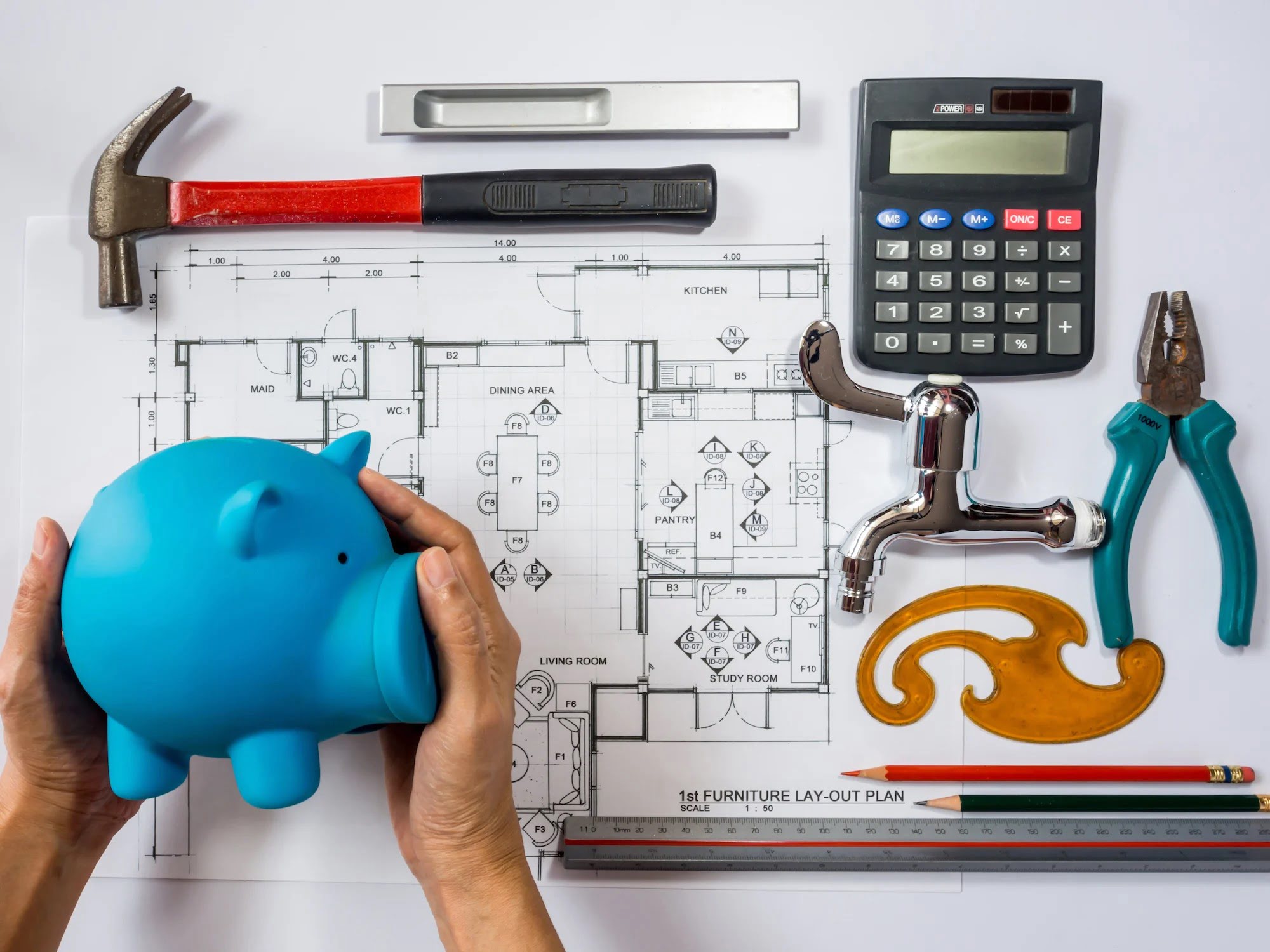
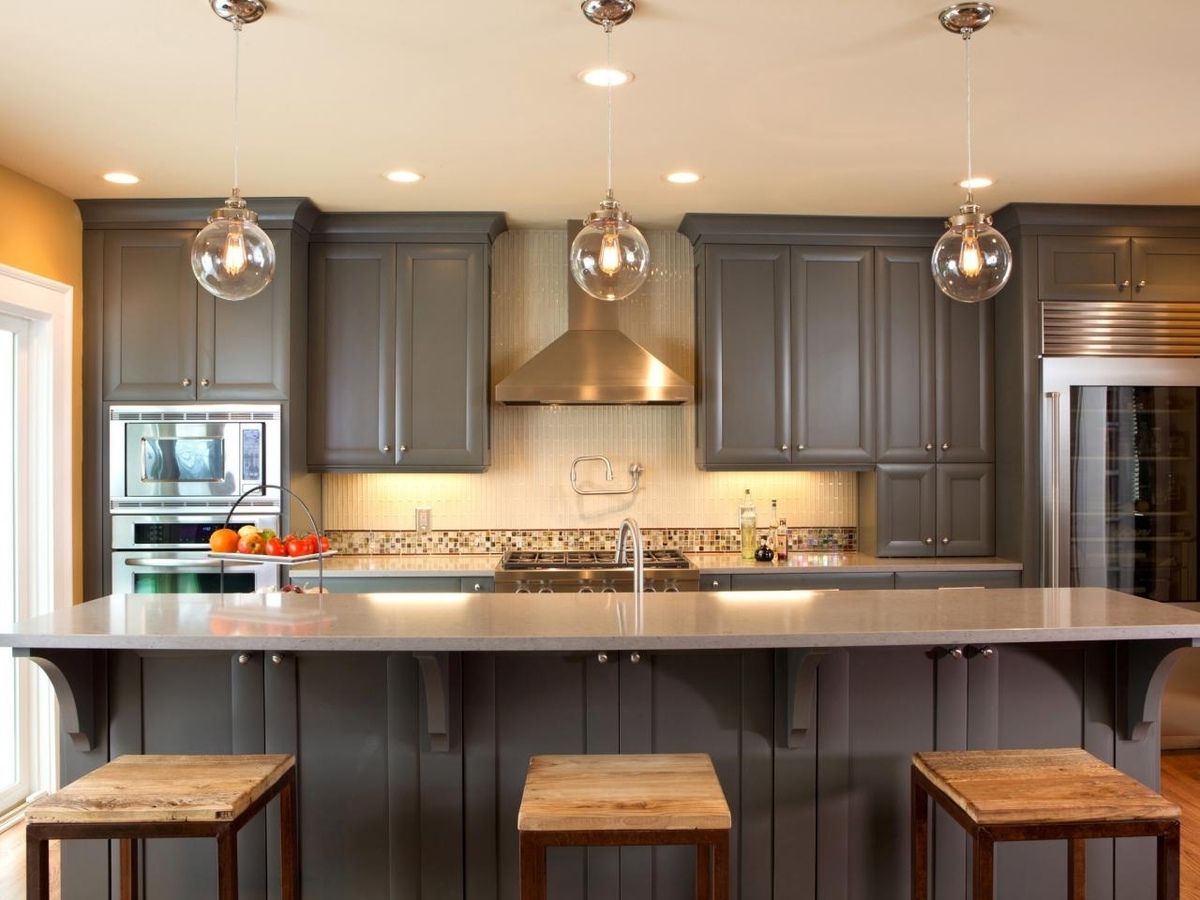
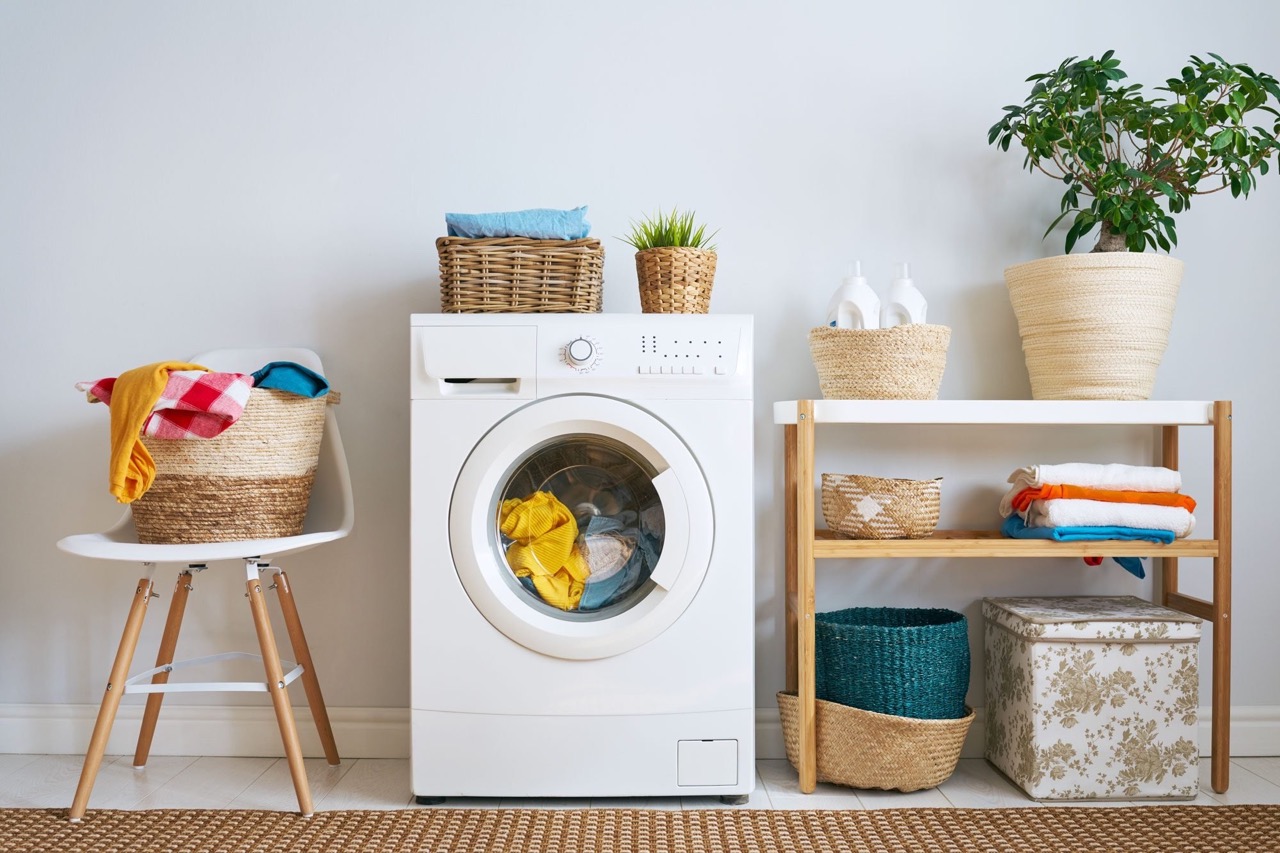


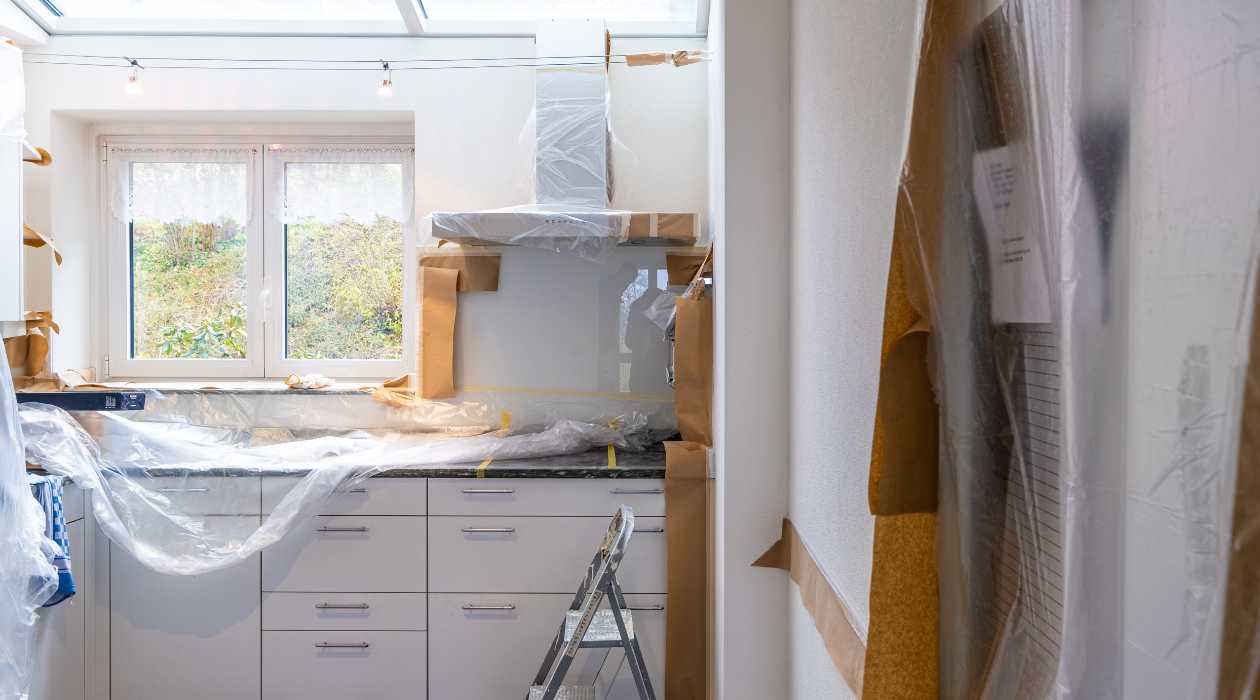
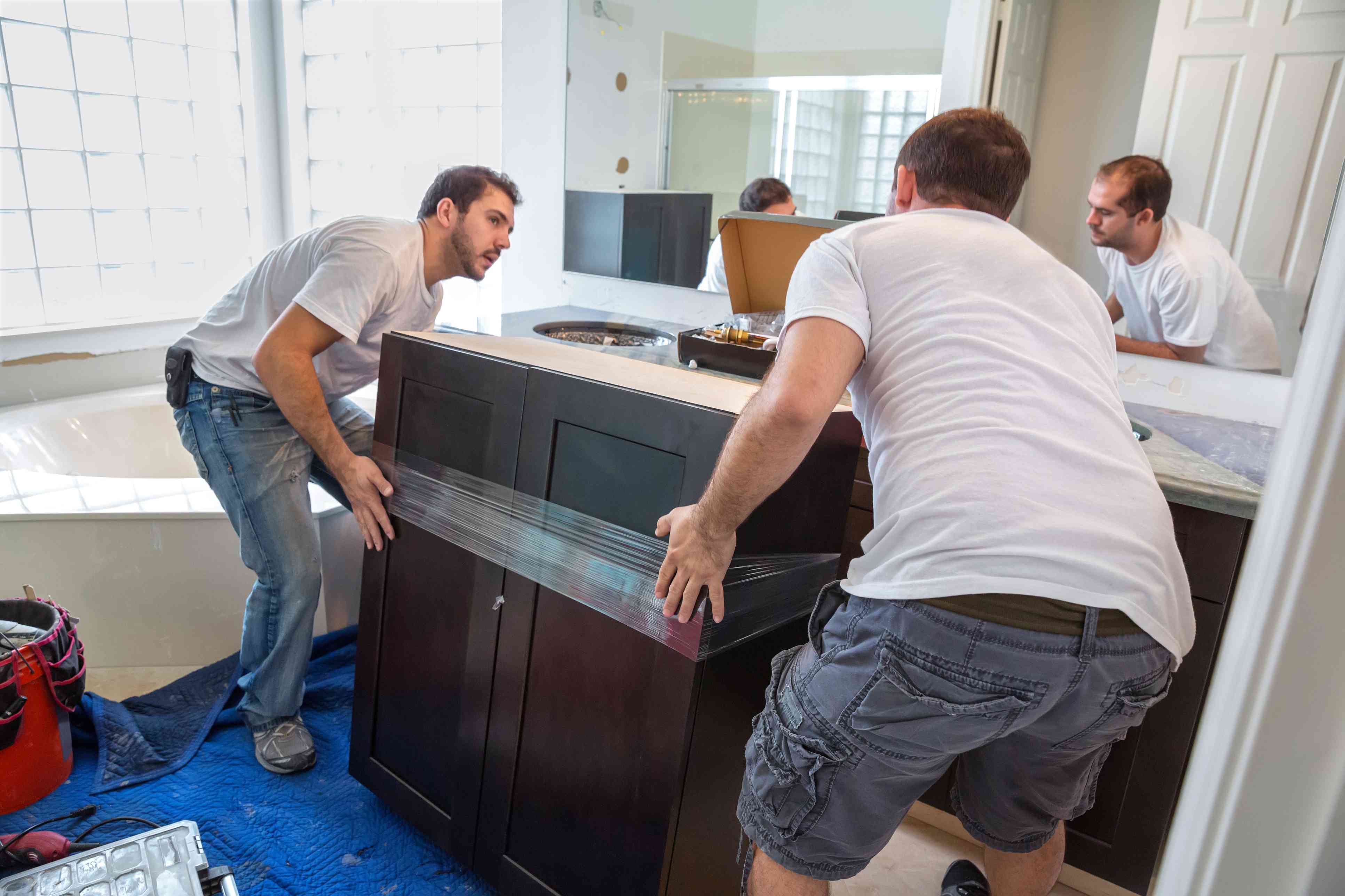
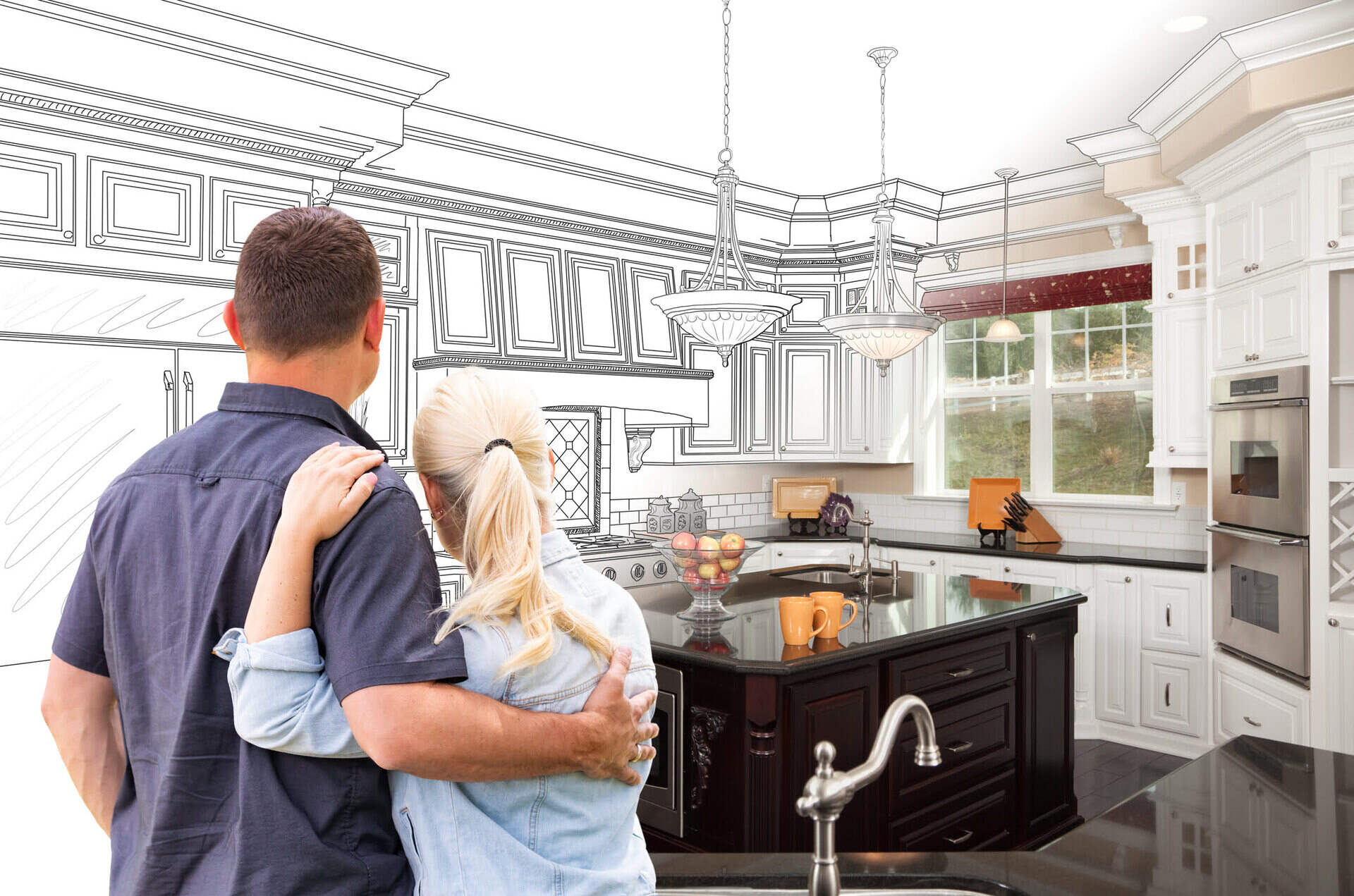





0 thoughts on “How Can I Save Money On Kitchen Cabinets? Kitchen Experts Advise”